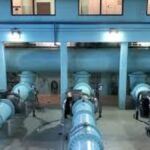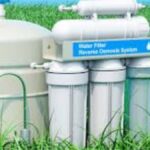Introduction
The importance of diligently maintaining dewatering equipment can’t be overstated for sectors that rely on water management. Proper upkeep not only ensures machines like pumps and filter presses operate at peak efficiency but also significantly reduces resource waste, downtime, and unexpected failures. When maintenance is scheduled and proactive, operational budgets go further, safety risks are minimized, and jobsite productivity increases.
Industries such as construction, mining, and wastewater management require access to high-performing equipment that removes excess water rapidly and reliably. Utilizing sludge dewatering equipment rental services can be one way to keep operations running smoothly while avoiding costly long-term investments. However, even the best equipment is only as good as the maintenance schedule supporting it.
Understanding Dewatering Equipment
Dewatering equipment comes in various types, from submersible pumps and dredge pumps to advanced centrifuges and belt filter presses. Each machine is engineered to extract water from solids, producing drier end products and helping businesses comply with stringent environmental standards. Solutions may vary based on the site’s required throughput, the nature of the slurry or sludge, and local regulatory needs.
When machines are pushed beyond their service intervals or neglected, performance declines. Wear on seals, cables, or rotating parts can lead to leakages, pump failures, and increased energy consumption, impacting the bottom line and hampering compliance efforts.
Efficient dewatering processes are a priority not just in developed areas, but also on remote and challenging sites worldwide. According to McKinsey & Company, resource-rich industries increasingly rely on modern, data-driven maintenance practices to maximize asset lifespan and control operational costs.
Benefits of Regular Maintenance
- Extended Equipment Lifespan: Structured preventive care helps components last longer and ensures performance doesn’t degrade over time. Machines operate more efficiently and last several years longer with minimal investment in parts and labor.
- Reduced Downtime: Regular checks drastically reduce the risk of surprise breakdowns that can halt projects. Keeping equipment in service means projects are delivered on time and budgets are protected.
- Cost Savings: Preventive maintenance identifies and corrects small issues—like seal leaks or worn bearings—before they become expensive emergencies. This approach can lead to thousands of dollars in annual savings, as verified by industry-wide studies from sources such as McKinsey & Company.
Key Maintenance Practices
A robust maintenance program includes a clearly defined schedule that addresses both routine observation and in-depth mechanical assessments:
- Daily Visual Inspections: Operators should look for leaks, check for deviations in sound and vibration, and confirm that all gauges are within normal parameters.
- Monthly Component Checks: Focused wiring, hoses, and connectors assessments help identify wear and potential failure points. Scheduled lubrication of moving parts also minimizes heat and friction-related damage.
- Quarterly Performance Assessments: Evaluate pump output and system pressure, changing any components displaying slowdowns or efficiency drops. Documentation of these tests helps predict future service needs.
- Annual Overhauls: Once-per-year, more comprehensive tear-downs catch issues invisible during basic checks—like internal rust, fatigue cracks, or impeller wear—allowing for key part replacement and detailed cleaning.
Implementing Predictive Maintenance
Adopting sensors, IoT technology, and cloud analytics is reshaping how maintenance is performed. Predictive maintenance leverages real-time data and advanced algorithms to anticipate failures before they occur. Pumps and dewatering units equipped with vibration sensors and flow meters can alert technicians to trend anomalies, meaning service is only done when evidence indicates it’s truly needed—not just on a fixed calendar.
This data-driven approach improves uptime and streamlines inventory costs and resource allocation. Facilities that adopt predictive maintenance benefit from longer intervals between major repairs and reduced risk of catastrophic equipment loss.
Final Thoughts
A well-maintained fleet of dewatering equipment is essential for successful project completion, regulatory compliance, and the ongoing protection of capital investments. By blending proven best practices with emerging predictive tools, organizations can minimize risk, maximize efficiency, and ensure reliable access to critical pumping capacity for years. Embracing a scheduled maintenance mindset isn’t just good practice—it’s a strategic advantage that drives the bottom line and supports sustainable operations.










